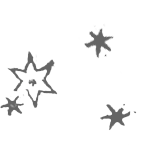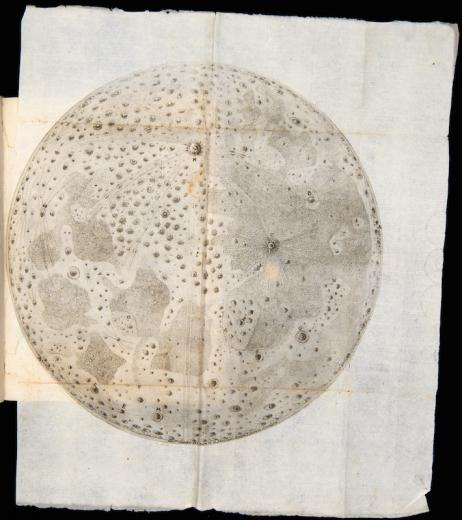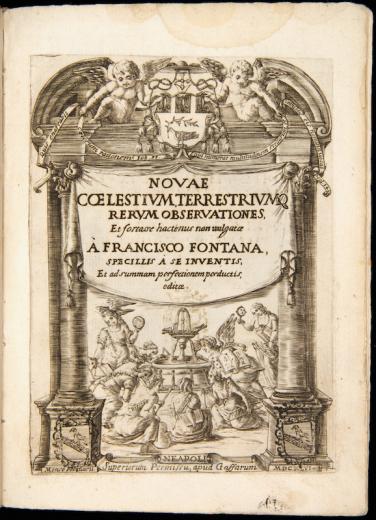Citation
Item Location
Inspired by Galileo, Fontana constructed his own telescope, improving the optics. Around 1629 he began a series of detailed sketches of the face of the Moon. A series of 28 copperplate engravings reveal the Moon’s surface as perceived on different dates, as well as a fold-out lunar map. 26 woodcuts depict the planets and stars, including Saturn and the phases of Venus. Fontana’s telescope viewed the Moon upside down and reversed. Dark regions appear in the lower half. Small craters are scattered almost randomly throughout the bright regions at the top (known today as the “mountainous highlands”). Fontana added a notable crater (C) known today as “Tycho”. Another crater (D) appears in the middle right (known today as “Copernicus”); just below and to the right are craters now known as Kepler and Aristarchus. A ray from C (“Tycho”) runs to crater H (today “Hercules” or “Posidonius”), on the edge of the dark region known today as the Sea of Serenity. Two craters are named after Fontana; one on the Moon and one on Mars.








